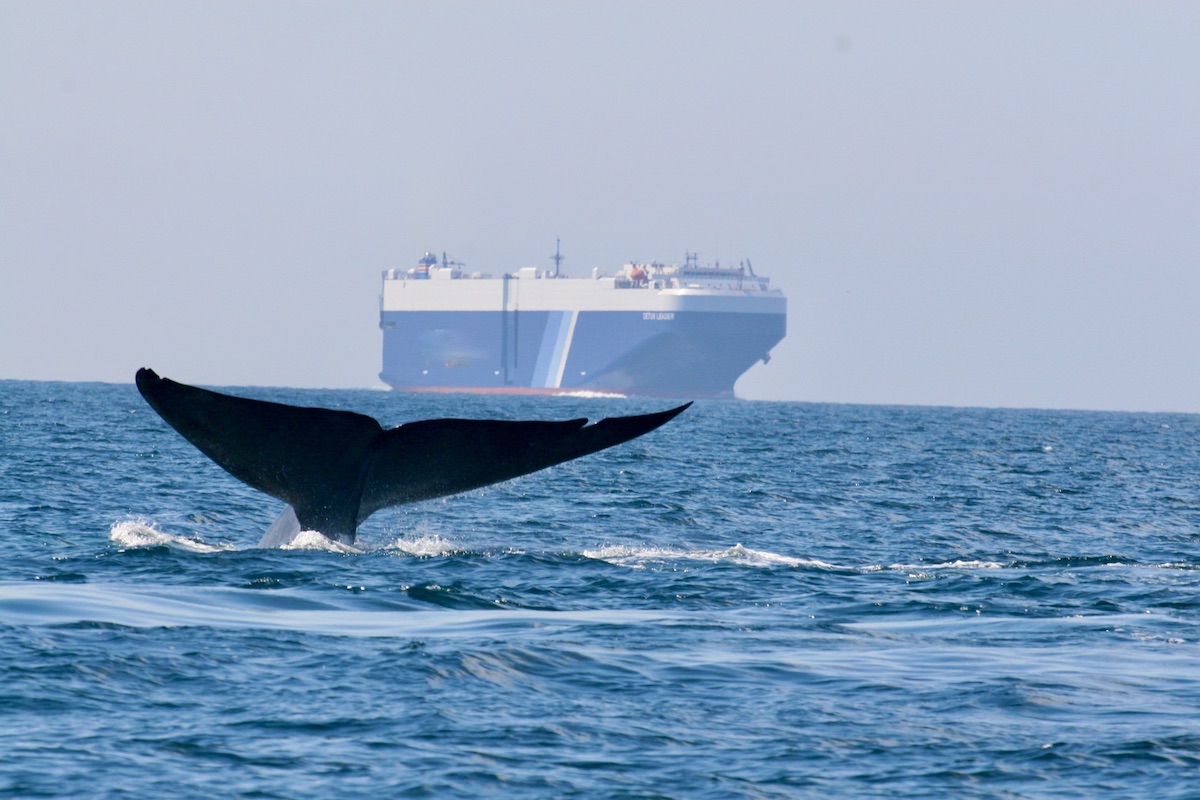Environmental Defense Center Applauds Federal Protections on Whales
New Changes in Santa Barbara Channel Aimed at Reducing Risk of Ships Colliding with Whales

Whales are a little safer in the Santa Barbara Channel, thanks to two new federal actions aimed at protecting large mammals from ship strikes and underwater noise.
The Environmental Defense Center, which has been one of the area’s biggest organizations advocating for environmental protections for the last 45 years, commended the two recent actions, which include a suite of marine mammal protections signed into law by President Joe Biden and another change by the U.S. Coast Guard and National Oceanic and Atmospheric Administration (NOAA) that would reduce the risk of collisions between ships and large whales in the Santa Barbara Channel.
“Whales face many threats due to climate change and the increased industrialization of the ocean,” said Kristen Hislop, Senior Director of the Marine Program at the Environmental Defense Center. “We are beyond thrilled to see the federal government take action that will result in tangible protections for whales.”
According to research from UC Santa Barbara’s Benioff Ocean Science Laboratory, one of the leading causes of death for large whales is ship collision, with an estimated 80 deaths per year on the West Coast.
The Santa Barbara Channel is part of a primary feeding ground and migratory route for the whales, but the 70-mile stretch of ocean is also a route for international cargo ships and other large vessels traveling up the coast from Los Angeles and Long Beach, leaving the whales in constant danger of colliding with the ships.
According to Whale Safe — an online tool designed to use real-time data to prevent fatal ship collisions with endangered whales in the Santa Barbara Channel — there were at least four humpback sightings on December 20.
The 2023 National Defense Authorization Act, signed into law by President Biden, aims to use the same real-time monitoring and mitigation technology to alert ship captains to the presence of whales.
“In doing so, the hope is that large ships can take immediate action to avoid a ship strike when whales are present,” Hislop said.
The bill would also direct the Maritime Administration to implement technology that would reduce ocean noise and monitor the levels of underwater noise to make it safe for whales near ports like Santa Barbara.
The International Maritime Organization (IMO) also approved changes to the shipping lanes in Santa Barbara Channel which would reroute vessel traffic away from an area around San Miguel Island that is a known “whale hotspot.”
“This will not only protect whales in this area from being struck and killed by large vessels, but it will also reduce ocean noise in this area, benefitting not only whales, but also other marine life,” Hislop said.
The change was the result of a seven-year process that was initiated by EDC and Channel Islands National Marine Sanctuary aimed at reducing the risks of collisions in the channel.
“We are grateful for the dedicated staff at the Channel Islands National Marine Sanctuary who will stop at nothing to find solutions to protect the threatened endangered whales that rely on sanctuary waters to thrive,” Hislop said. “We also applaud the U.S. Coast Guard for moving through the daunting International Maritime Organization process to move cargo ships away from important whale feeding and migratory areas.
She said the EDC will continue efforts to reduce the risk of ships striking whales.
Support the Santa Barbara Independent through a long-term or a single contribution.



